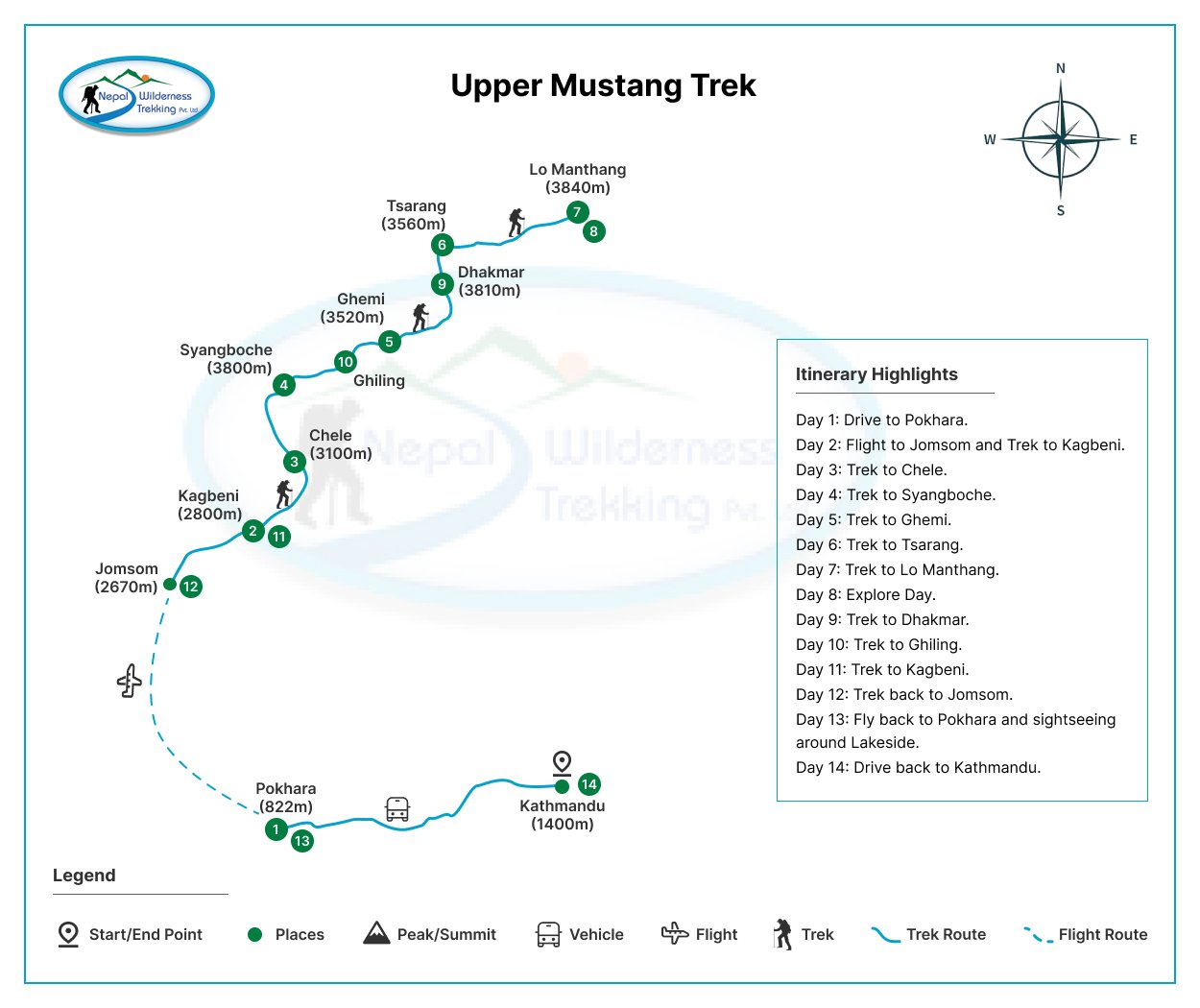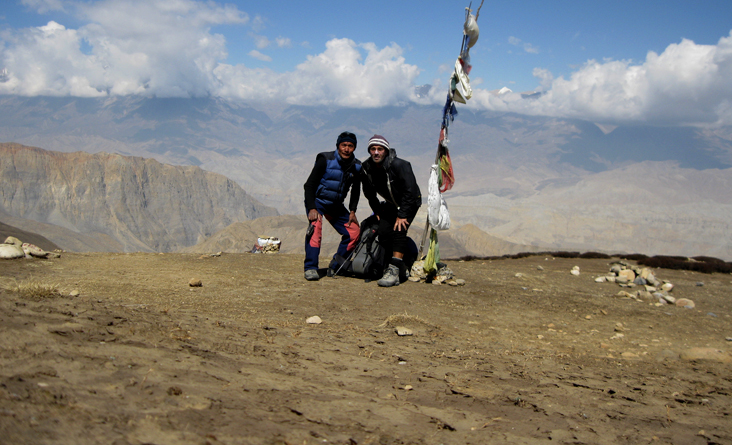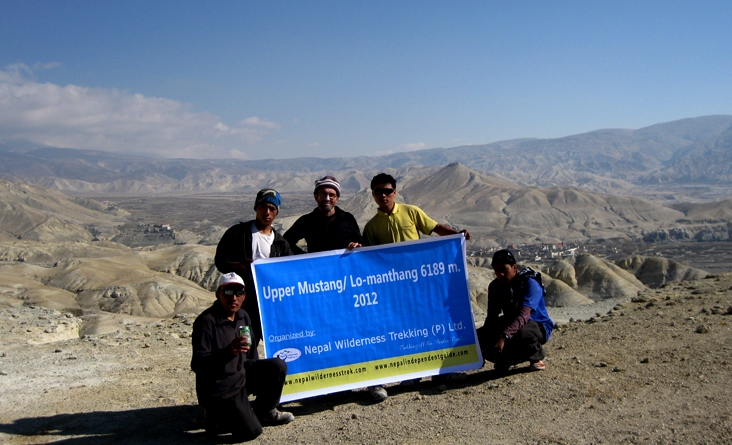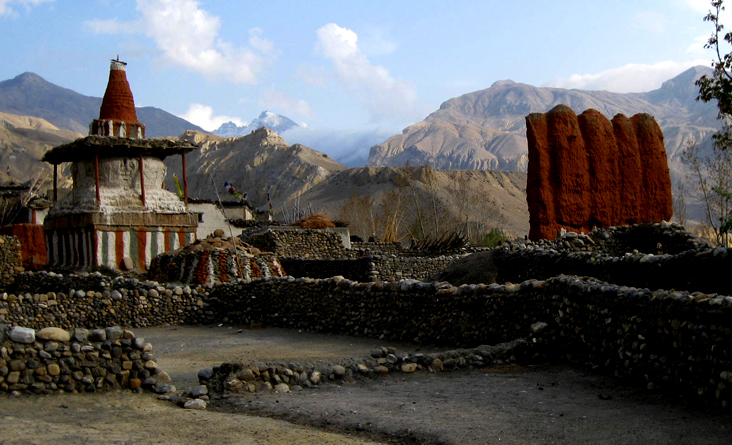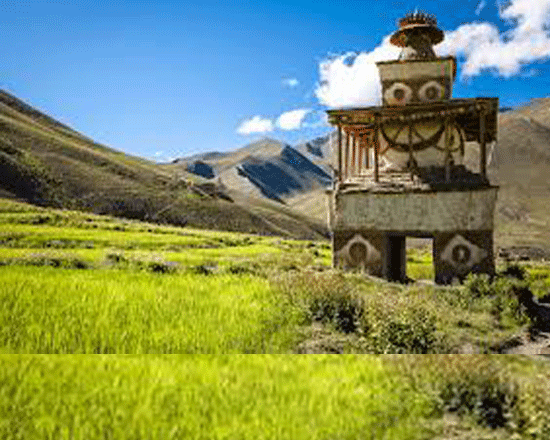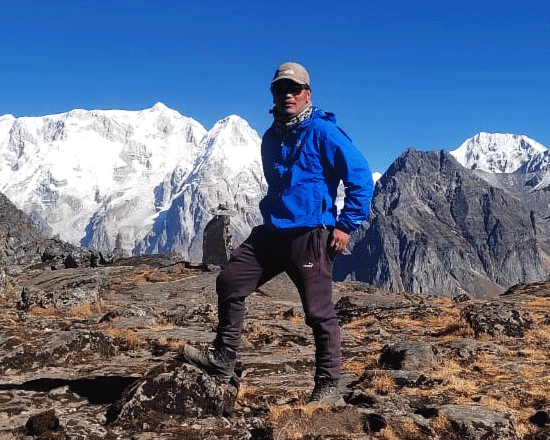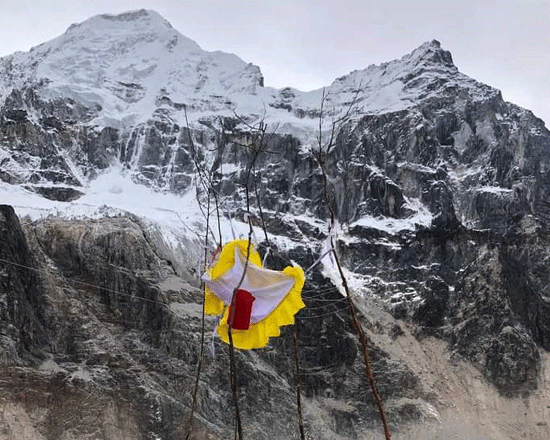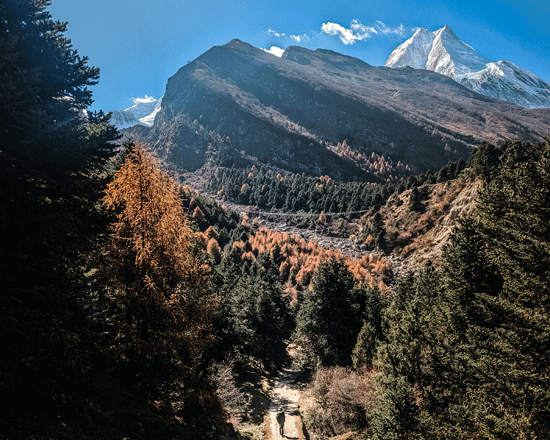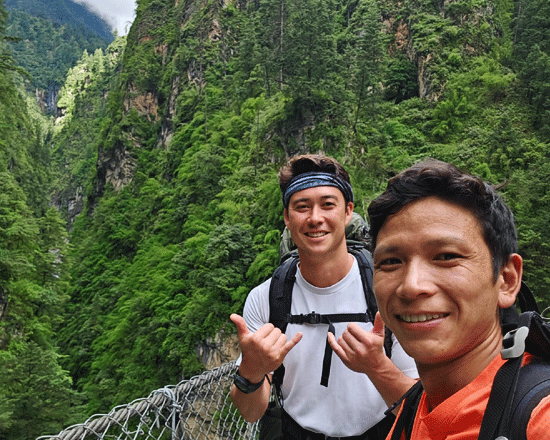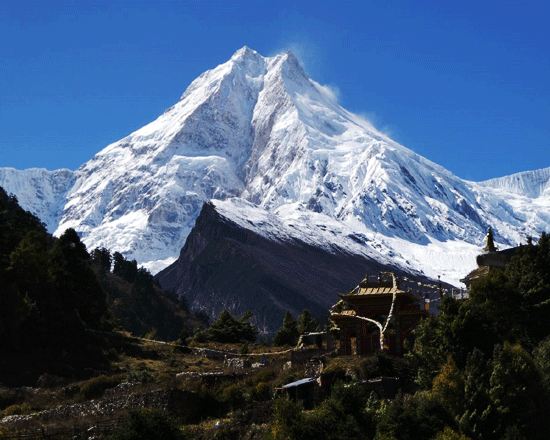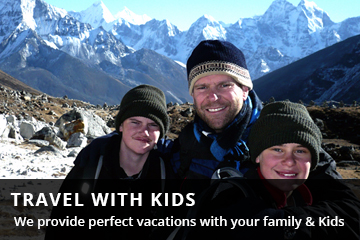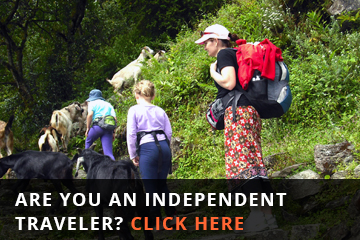Upper Mustang Trek
Upper Mustang Trek
Wilderness TrekkingTrip Facts
Since the terrain can be hard and the days long, hikers on these treks should be in good physical condition and have some previous mountain walking experience. Steep climbing may be involved, although it is never necessary to use ropes. Treks at this level can he arranged for periods of 16 to 21 days. Typically, a gradual ascent through a green river valley will lead you up to a number of high passes, where you will reach the altitude of 5416m. Often times, you will get a close insight into the Tibetan culture. Participants should expect to trek above 5416m/17872ft.
Mode of Travel : Flight/Land100%
Overview
The Upper Mustang Trek 14 Days Package Itinerary
Upper Mustang hidden valley trek in Nepal, attracting an extraordinary high Himalayan journey. The journey dives into the stark, desert-like terrain characterized by deep canyons, eroded cliffs, and colorful rock formations. The arid landscape and the snow-capped peaks of the Annapurna and Dhaulagiri ranges create a stunning visual experience. Additionally, the Kali Gandaki River, one of the deepest river valleys in the world, adds to the trek’s scenic splendor.
This journey provides a unique chance to enter a land with naturally formed ancient caves complexes thousand in number. These man-made caves are perched high on the cliffs and have been used for thousands of years. Some caves were once used as burial chambers, while others served as meditation retreats for monks and habitation for centuries. Archaeological studies have uncovered artifacts and manuscripts, shedding light on the early history of the region. The Chhoser Cave, near Lo Manthang, is a prime example, with multiple rooms and stairways carved into the cliff face.
Present the secrets of this ancient kingdom, captivates striking desert landscapes, and the glory of the Mustang region. For centuries, Upper Mustang remained cut off from the rest of the world, both geographically and culturally. Exploring these caves, such as those near Chhoser, gives a fascinating glimpse into the region’s past. The geological formations of the area, shaped by centuries of wind and water erosion, are equally mesmerizing, making a visually stunning trek.
The Upper Mustang Valley contains very few trees and bushes. The Bhote pipal is the most common tree, well-known for its use for construction of building and its ability to grow with very little water. This tree has yellow-colored leaves. Builders use all available materials in the valley, with most structures being constructed from wood.
Exploration of the Upper Mustang Forbidden Kingdom
Exploring the Forbidden Kingdom, Upper Mustang ” adventurers to a once-restricted region” opened its doors to outsiders in 1992. People referred to the region as “forbidden” because of its inaccessibility and the Nepalese government’s decision to close it to outsiders for political and cultural preservation. Its isolation has protected it from external influences, preserving its Tibetan culture, religion, and way of life.
For this reason, the region has a living museum, where the past blends seamlessly with the present. The combination of ancient monasteries, unique festivals, and awe-inspiring landscapes make this trek an unforgettable journey into the heart of a mystical and hidden world. This indicates that the region for centuries has remained cut off from the rest of the world, both geographically and culturally.
This journey captivates striking desert landscapes and the glory of the Mustang region.
Cultural Immersion of Upper Mustang Trek
The Mustang region rich with the cultural heritage and religion of Thakali and Tibetan Gurung people is strongly influenced by Tibetan Buddhism. The whole trek is flash of ancient monasteries, Chortens, and caves decorated with beautiful murals and religious artifacts. Interact with the warm and welcoming local people, who have preserved their unique traditions and way of life for centuries. Gain insights into the vibrant Tibetan-influenced culture as you witness traditional ceremonies and experience the locals’ hospitality.
The trek offers a deep dive into the Tibetan-influenced culture of the region. The people of Mustang, known as the Loba, follow Tibetan Buddhism. They have the strong influences of the king’s ruling system and are still respected. In many people’s homes the king and queen pictured in the wall of their deep respect.
Cultural Preservation
Upper Mustang is a living museum of Tibetan culture. Where one can encounter the lavish Tibetan architectural style, with white-washed houses, red-walled monasteries, and prayer flags fluttering across the arid landscape. Tibetan Buddhism dominates the region, and local people and monasteries still practice ancient traditions. Ongoing efforts preserve its unique heritage, and trekking contributes to these efforts by supporting the local economy and promoting sustainable tourism practices.
Tibetan dialects spoken in the region are treasures of Tibetan Buddhism that have survived for ages.
Upper Mustang Trek Map
The trek usually starts from Jomsom after a flight from Pokhara. From Jomsom, the trail follows the Kali Gandaki River valley through Kagbeni, the gateway to Upper Mustang, and continues to Lo Manthang. The trek typically takes about 10-14 days, depending on the itinerary and the time spent in Lo Manthang and surrounding areas.
This route is part of the Lower Mustang trek and is connected to the Muktinath trek, eventually linking with the Thorong La Pass.
Upper Mustang Trek Difficulty
The Upper Mustang trek is considered a moderate trek, with some factors that trekkers should be aware of:
Altitude:
- Lo Manthang is about 3,800 meters (12,467 feet) not as high as some other treks in Nepal. But the altitude can still affect trekkers, especially those who are not well-acclimatized. Proper acclimatization is essential to avoid altitude sickness.
Terrain:
- Rugged and arid terrain, with a mixture of steep ascents and descents. The trail’s rocky and dusty makes it challenging, especially in windy conditions. However, the lack of lush vegetation means that the paths are generally clear and well-defined.
Climate
- The weather in Upper Mustang can be harsh when temperatures drop significantly. The region is windy, and the sun can be intense due to the dry, open landscape.
Physical Fitness:
- While the trek is not technically difficult and does not require any climbing skills, a reasonable level of fitness helps to handle the long days of walking and the sometimes steep ascents. Daily walking hours typically range from 5 to 7 hours.
Accessibility:
- Unlike other popular trekking routes, there are fewer facilities and amenities along the Upper Mustang trek. Accommodations are basic, and supplies can be limited, so trekkers need to be prepared for a more rustic experience.
Lo Manthang – The Ancient Capital
The ancient walled city of Lo Manthang served as the capital of the Kingdom of Lo. The city was constructed in the 15th century and has retained much of its medieval character. Within the city, you’ll find four major gompas (monasteries), including the famous Thubchen Gompa and Jampa Lhakhang. The King’s Palace, though not in use as a royal residence anymore, still stands tall as a symbol of the kingdom’s former glory.
Upper Mustang was once part of the Kingdom of Lo, an independent Tibetan kingdom. The region’s capital, Lo Manthang, was the seat of the kingdom, ruled by a lineage of kings known as the Lobas. Although the monarchy was officially dissolved in 2008, the king (Jigme Dorje Palbar Bista) is still respected by locals
With deep ties to Tibetan Buddhist culture, the town features monasteries, temples, and cherished traditions. Unique architecture, including cave dwellings, graces the remote, dry landscape surrounded by the Himalayas. Preserved architecture and cultural heritage provide a window into its history and way of life. The Upper Mustang trek leads to this legendary dry city, the former capital of the Mustang Kingdom. One must visit the 15th-century royal palace, and delve into history, mythology, architectural heritage, and ancient traditions for a captivating journey through time.
The Tiji Festival of Mustang
The Tiji Festival is an annual event in Lo Manthang, celebrated for three days around late April to early May. Rooted in Tibetan Buddhist mythology, it features mask dances depicting deities and demons, symbolizing the triumph of good over evil. The festival includes religious rituals, prayers, and communal gatherings, showcasing cultural heritage and spiritual significance. Tourists are drawn to its vibrant performances and unique atmosphere, but respectful engagement with local customs is essential.
Natural Splendors
Regardless of its barren appearance, the Mustang boasts surprising natural beauty. Traverse the Kali Gandaki River Gorge, the deepest gorge in the world, and witness the dramatic erosion patterns carved by wind and water. Encounter unique rock formations, hidden caves, and ancient fossils, revealing the geological wonder of the region.
Farming Crops in Mustang
Upper Mustang Agricultural Farms, cultivate exceptional crops in the stunning region of Upper Mustang. The farms specialize in sustainable farming practices, actively ensuring the growth of high-quality and organic products. From cultivating aromatic herbs and nutritious grains like barley and buckwheat to tending vibrant vegetables. They actively engage in the careful harvesting and packaging of their diverse range of crops to maintain their freshness and nutritional value. Additionally, they actively prioritize the growth of acute high-altitude fruits like apples and apricots. Upper Mustang Agricultural Farms strives to provide the local markets with the finest, farm-fresh products while promoting sustainable farming practices.
Mustang Trek Experience the warm hospitality of the local people as you stay in authentic tea houses along the trekking route. These charming accommodations provide comfortable lodging, delicious meals, and a chance to connect with fellow trekkers. Share stories around cozy fireplaces, savor traditional Nepali cuisine and feel at home in the rugged wilderness.
Lo Manthang side trip
Experience the captivating side trip from Lo Manthang to closer Monastery and Cave, the Lo Manthang journey that takes you through picturesque landscapes of yak and horse grazing on the arid high-range plateau. This remarkable region showcases gray mountainous valleys reminiscent of the renowned Upper Dolpo Trek, providing a unique and unforgettable experience. Just a short 4-hour bike ride from Lo Manthang lies the Kara La Pass, which marks the border with China. Many adventurous Nepalese bike riders embark on this thrilling snow-filled expedition, making it a popular destination for bike tours. Immerse yourself in the beauty of this untamed terrain and embark on an exhilarating adventure like no other.
Journey to Kagbeni: Connecting Lower Mustang and Thorong La Pass
Holi lake Damodar Kunda
Damodar Kunda is one of the revered holy lakes and spiritual meditation sites in the upper Mustang region, associated with the concept of Shangri-La. Located 40 km from Lo Manthang, Damodar Kunda holds immense significance for religious and natural qualities. Sometimes people see the unseen Spiritual yogis in meditation at this place. This makes it a notable destination for those seeking a deeper connection with the region’s spiritual and natural wonders due to its proximity to Lo Manthang. You could also include this area in your Mustang trekking itinerary.
Damodar Kunda is a route to access the Nar and Phu villages, with the journey leading through the Saribung Pass. This path allows travelers to explore the scenic beauty trails and poons while connecting with the unique cultures and lifestyles of Nar and Phu. The route via Damodar Kunda and Saribung Pass provides an opportunity for an enriching and adventurous trekking experience.
Best season for Mustang trek
The optimal time for the Upper Mustang Trek is during the monsoon season from May to October. This rain shadow region experiences minimal rainfall, making it perfect for trekking. This period is also suitable for other treks like Upper Dolpo and Annapurna Circuit. While spring and autumn season are recommended treks in Nepal. Upper Mustang’s rain shadow allows for monsoon exploration. It can also be combined with the Annapurna Circuit Trek by crossing Thorong La Pass or binding it anti-clockwise.
Responsible Trekking
Experience the 14-day Upper Mustang package itinerary led by the expert team, Nepal Wilderness Trekking, committed for responsible and sustainable tourism. Our experienced guides prioritize eco-friendly practices, ensuring the trekkers respects the delicate ecosystem and local communities. We encourage trekkers to embrace the Leave No Trace principles, minimizing their environmental impact and preserving the pristine beauty of the Upper Mustang trek.
Upper Mustang trek permit cost details.
- Annapurna Conservation Area Permit (ACAP):
-
You need the Annapurna Conservation Area Permit for various trekking routes in the Annapurna region, including sections of the Upper Mustang trek.
- The cost of the ACAP for foreign nationals is USD 30. This permit is essential to ensure the conservation and sustainable management of the natural resources and biodiversity in the region.
-
- Trekkers’ Information Management System (TIMS) Card:
- The TIMS card is a registration card that provides essential details about trekkers, their trekking routes, and emergency contacts for safety purposes.
- The cost of the TIMS card for foreign trekkers is USD 20.
- The TIMS card helps authorities keep track of trekkers in the region and provide necessary assistance if needed.
- Restricted Area Permit (RAP) for Upper Mustang Trek:
- The Restricted Area Permit (RAP) costs USD 500 and is applicable for foreigners for the 10-day trek. If you wish to extend your stay beyond 10 days, additional fees are applicable at $50 per day.
- To process documents you need to submit an original copy of your passport, two copies of pp size photo, your arrival visa, company registration certificate, and other necessary verified company documents.
-
Authorized departments for issuing the RAP are:Department of Immigration in Kathmandu.local immigration office in Pokhara.A registered trekking agency in Nepal.
Conclusion
The Upper Mustang Trek is a once-in-a-lifetime adventure that takes you into the heart of an ancient kingdom, steeped in history, culture, and natural wonders. Let Nepal Wilderness Trekking be your trusted companion as you explore the mystical landscapes of the Upper Mustang. Our experienced team will ensure your safety, comfort, and a truly immersive experience in this enchanting region. Get ready to create lasting memories as you embark on a journey of discovery and self-reflection amidst the rugged beauty of the Upper Mustang.
Note
We guarantee departure on all published dates for the Mustang Trek Itinerary. If these dates don’t match your travel plans, we are happy to create a trip for your desired dates. Let us know what kind of trip you are looking for, and we will help make your dream destination a reality.
Detail Itinerary
- Day 1: Drive from Kathmandu to Pokhara Take an early morning tourist bus drive which takes about 6-7 hours. You can spend the rest of the day exploring Pokhara, a beautiful lakeside city.
- Day 2: Flight to Jomsom and Trek to Kagbeni Take an early morning flight from Pokhara to Jomsom, which takes about 20 minutes. Start trekking towards Kagbeni, a beautiful village located at the entrance of the Upper Mustang. (2,800m/9,186ft) (estimated trekking time: 3-4 hours)
- Day 3: Trek from Kagbeni to Chele Continue trekking along the Kali Gandaki River towards Chele, passing through beautiful landscapes and ancient monasteries. (3,050m/10,006ft) (estimated trekking time: 5-6 hours)
- Day 4: Trek from Chele to Syangboche Trek through beautiful landscapes, (3,475m/11,398ft) (estimated trekking time: 6-7 hours)
- Day 5: Trek from Syangboche to Ghemi Continue trekking through stunning landscapes towards Ghemi, a beautiful village that is home to several ancient monasteries. (3,520m/11,546ft) (estimated trekking time: 5-6 hours)
- Day 6: Trek from Ghemi to Tsarang Trek towards Tsarang, passing through beautiful landscapes and ancient monasteries along the way. (3,560m/11,680ft) (estimated trekking time: 4-5 hours)
- Day 7: Trek from Tsarang to Lo Manthang Trek towards Lo Manthang, the cultural and political capital of Upper Mustang, passing through beautiful landscapes and ancient monasteries. (3,840m/12,598ft) (estimated trekking time: 5-6 hours)
- Day 8: Explore Lo Manthang Take a rest day to explore Lo Manthang, including the Royal Palace and the ancient monasteries.
- Day 9: Trek from Lo Manthang to Dhakmar Begin your return trek towards Jomsom, passing through beautiful landscapes and ancient monasteries along the way. (3,810m/12,500ft) (estimated trekking time: 6-7 hours)
- Day 10: Trek from Dhakmar to Ghiling Continue trekking towards Jomsom, passing through beautiful landscapes and ancient monasteries along the way. (3,806m/12,484ft) (estimated trekking time: 5-6 hours)
- Day 11: Trek from Ghiling to Kagbeni Trek towards Kagbeni, passing through beautiful landscapes and ancient monasteries along the way. (3,050m/10,006ft) and drive back to Jomsom (estimated trekking time: 6-7 hours)
- Day 12: Trek back to Jomsom 4-hour hike Stay overnight at the lodge
- Day 13: Fly back to Pokhara and sightseeing around Lakeside.
- Day 14: Drive to Kathmandu by tourist bus at 7:30 am and transfer to the hotel.
Cost Included
- Two nights clean hotel in Pokhara on b/b plan at Lakeside in Pokhara.
- Italian, Chinese, Nepali, Indian, and many other European Delicious Meals three times a day (Breakfast, lunch, and dinner chosen by Menu)
- Clean Lodge accommodation during the trekking.
- Experienced English-speaking trekking guide licensed by the government, familiar with the area.
- One porter for every two to three participants. (Note: An additional cost applies for solo clients requiring a porter.)
- Guide and other staff's food, flight, accommodation, salary, insurance, transportation, and equipment.
- Kathmandu- Pokhara- Kathmandu by tourist bus.
- Pokhara- Jomsom- Pokhara flight tickets.
- Taxi from and to the domestic airport in Pokhara.
- The Mustang special permit.
- ACAP( Annapurna Conservation Area Project).
- TIMS Permit
- First aid medical box
Cost Excluded
- Accommodations in Kathmandu
- all beverages Hard and soft table drinks such as Coke, Fanta, mineral, tea, coffee, water, and beer.
- Personal Travel insurance.
- Rescue operation.
- International airfare.
- Nepal tourist visa fee ( $ 25 for 15 days and $ 40 for 30 days multiple entry visas)
- Tips for guide and porter
- Excluded are all costs and expenses not listed under "cost includes"
- Inclusion of costs or delays beyond the control of the management, such as landslides, weather conditions, itinerary modifications due to safety concerns, illness, changes in government policies, strikes, etc.
Trip Map
